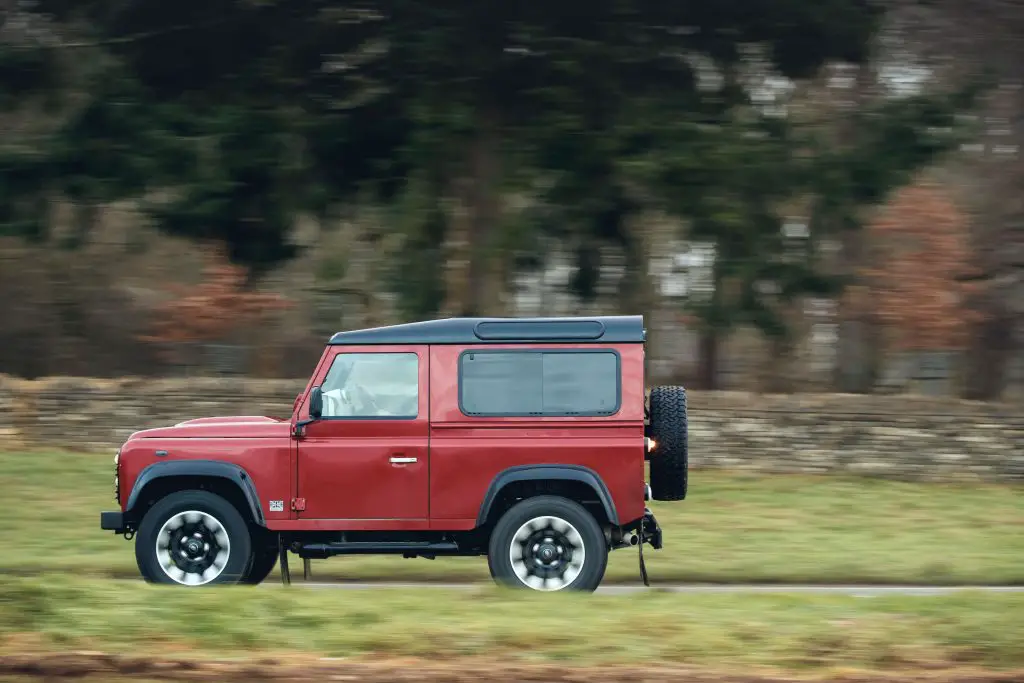Alas, the old girl is gone. After 68 years and 2 million models – 70% of which are thought to still be on the road – the Land Rover Defender has finally been laid to rest. And like a true British hero, it didn’t go quietly. Since news of its impending demise broke in 2013, demand for the Defender has skyrocketed with production up from 84 to 125 cars a day. With this in mind then, why did Land Rover end production of one of the world’s most iconic cars?
The company themselves chose to blame the model’s passing on tough European Union emissions and safety regulations (the Defender was never officially rated by Euro NCAP). Whilst both are valid reasons, EU regulations were merely the straw that broke the camel’s back. There were other, more pressing issues which Land Rover had to address.
Built The Old Fashioned Way
One of the most obvious was the ‘traditional’ assembly techniques used to build the Defender. Yes, there were high-tech robots on the Solihull production line, but the human element required to build the car was massive. Despite it being one of the most hi-tech factories in the country, parts of the Defender assembly process remained unchanged from 68 years ago.
Couple this with the vehicle’s vast number of permutations, and the end result is one of the most complex builds in the automotive world. To give a sense of scale, Jaguar’s XE production line churned out 10 times the amount of cars Land Rover did with the Defender.
Purists of the model will argue the painstaking production process is worth it if preserves the heritage of the car – and they may have a point. But Land Rover are currently doing all they can to rebrand themselves in the premium luxury market; one which couldn’t be less compatible with the Defender’s MO.
Moving With The Times
Land Rover’s aristocratic farmyard image of old saw the company lose startling amounts of money as it moved into the new millennium. Cars such as the Discovery and Range Rover revitalised the brand, staying true to their roots, yet bringing in swathes of new business with high levels of luxury and style.
The Defender though was left behind. Although the existing customer base stayed loyal, the car had nothing to show for its close relation to the newer siblings. Stuck firmly in an era Land Rover would, in a commercial sense rather forget, the Defender simply did not fit into the company’s latest business model. Contemporary Land Rovers count the multi-talented Audi Q7 and BMW X5 as rivals. The Defender meanwhile goes head to head with the Isuzu D-Max.
Land Rover A Victim Of Their Own Success?
This, sadly, brings us on to the final reason the Defender was cancelled. It wasn’t a very good all-round car. Sure, it’s off-road ability was almost unrivalled, yet that was the only string in its bow. Back in 1948 when off-road cars were more one-dimensional, that wasn’t a problem – they had one purpose and they were judged on that.
Now however, and Land Rover are partly a victim of their own success here, the goal posts have shifted. Off-road cars of today can be luxury limousines with TVs and massaging seats, their talents not being restricted to one specific area. Direct rivals such as the Toyota Land Cruiser or Nissan Pathfinder would knock spots off the Defender on the road, whilst not lagging behind off it either. It was this failure to diversify its talents and move with the times which dealt the final blow to the Defender.
Predictably, a replacement has been mooted for 2018; a hugely-capable off-road package combined with rugged looks and impeccable on-road manners are to be expected. Yet the heritage and stubborn will to stick to what it was great at are gone forever.



